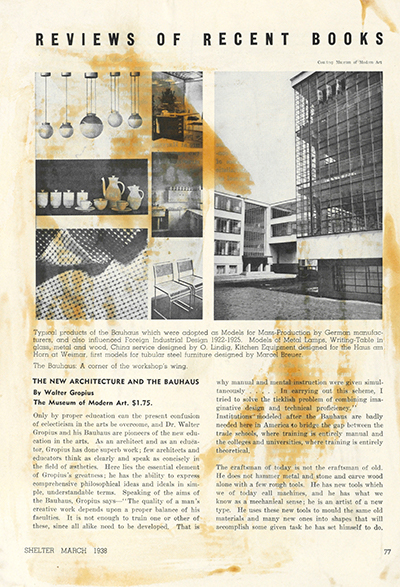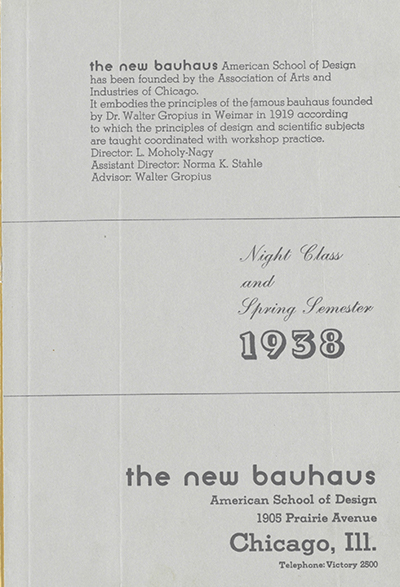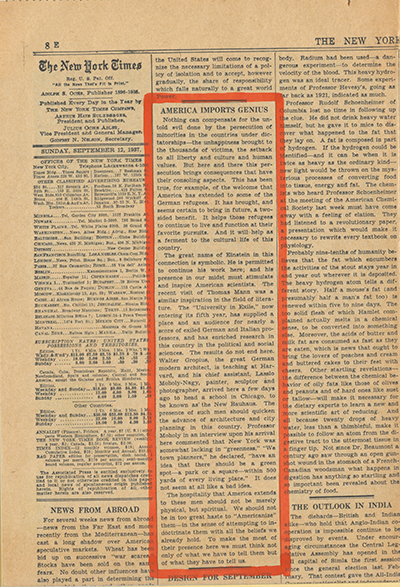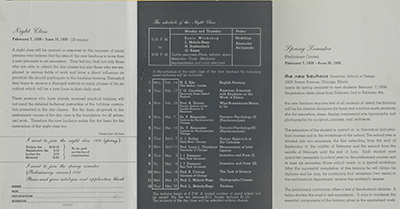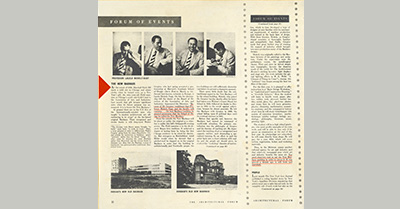I
llinois Institute of Technology’s legacy as a nexus for the teaching of design and architecture has its roots in the Bauhaus, an influential arts and crafts, design, and architecture school founded in 1919 by Walter Gropius in Weimar, Germany. The Bauhaus remained open for 14 years before it closed under the dictatorship of Adolf Hitler.
In the early 1930s business leader Marshall Field III donated a family mansion on Chicago’s South Prairie Avenue to the Association of Arts and Industries to house a new school of industrial design. Gropius recommended that artist and Bauhaus colleague László Moholy-Nagy be named director of the school, which became the New Bauhaus: American School of Design. Although it was only in existence under that name from October 1937–June 1938, the New Bauhaus went on to become Illinois Tech’s Institute of Design.
Among the many curiosities that visitors to the University Archives and Special Collections of Paul V. Galvin Library can view is a black plastic-covered scrapbook adorned simply with a lowercase “b” cut-out. The “b” stands for Bauhaus; the scrapbook’s design pays homage to the minimalistic and handcrafted leanings of the German school. The scrapbook is believed to have been created by Moholy-Nagy, commemorating the period that the New Bauhaus existed. As with most any scrapbook, it showcases proud moments and accomplishments. An article from The Architectural Forum features a sentence underlined in red for emphasis:
“Because of Dr. Gropius’ confidence that Professor Moholy-Nagy and his faculty will continue…the best Bauhaus tradition he granted permission that the School of Design be called the New Bauhaus.”
A story from the Sunday, September 12, 1937, edition of the New York Times is bordered by red ink. Titled “America Imports Genius,” the article cautions Americans not to be too eager to “Americanize” emigrants Albert Einstein, Thomas Mann, Walter Gropius—and Moholy-Nagy. The writer states, “To make the most of their presence here, we must think not only of what we have to tell them but of what they have to tell us.”
Other pages of the scrapbook include large black dots in which key aspects of the page are summarized, such as “Dr. Walter Gropius recommended L. Moholy-Nagy as the best person we could get for the director” and “Time magazine speaks of the New Bauhaus as a name exciting to all architects and designers.”
A final black dot brings the scrapbook full circle: “The integration of art, science, and technique is the essence of the Bauhaus education.”
